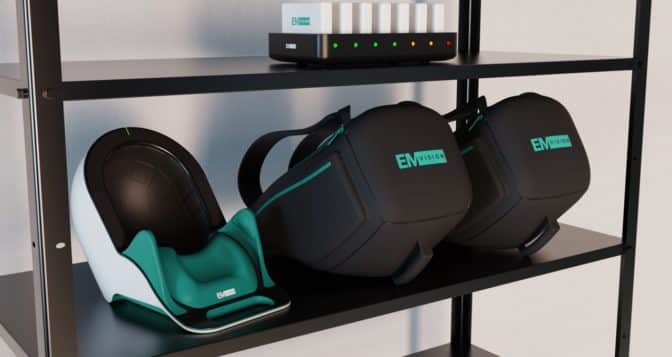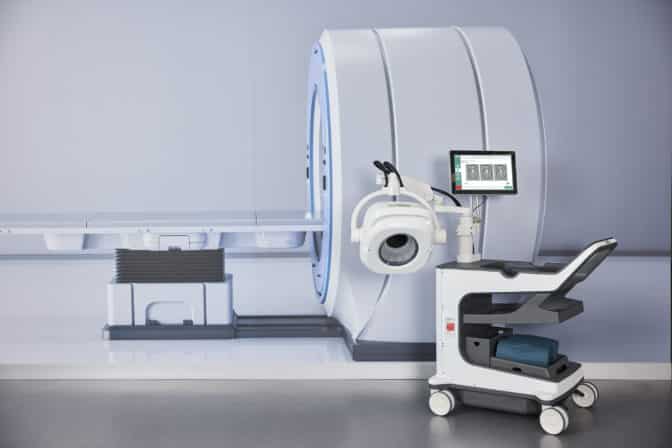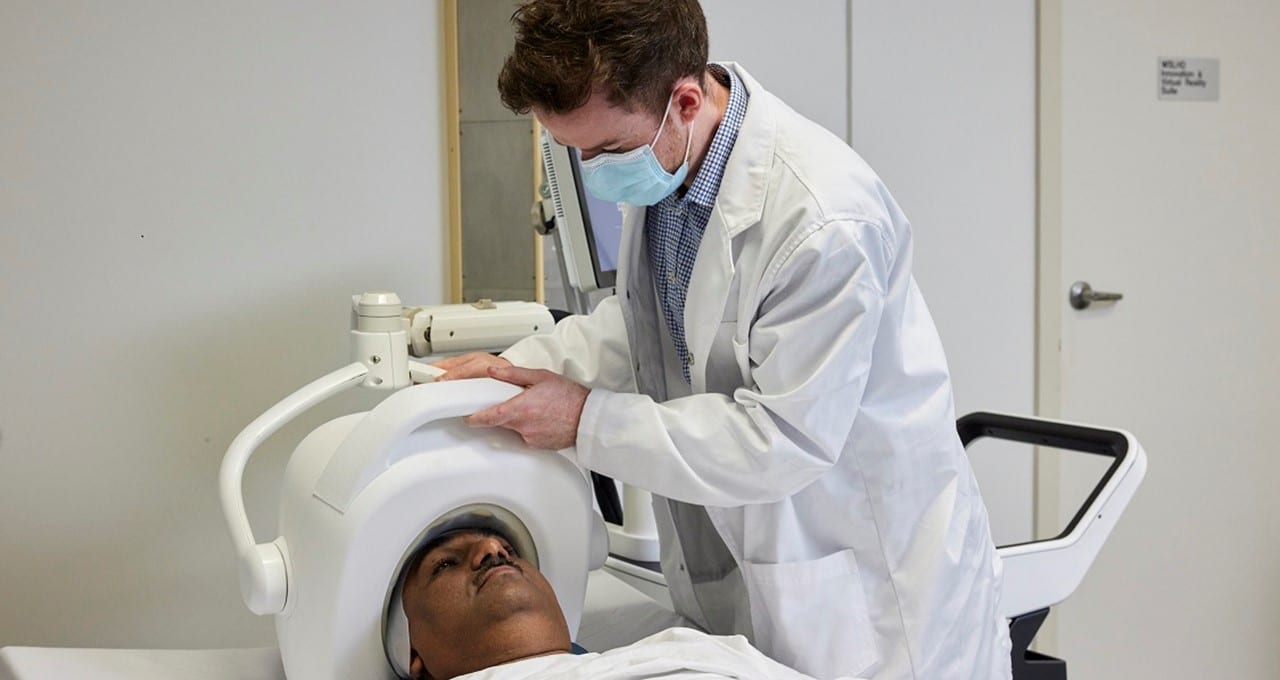For every minute that a stroke is left untreated, the average patient loses nearly 2 million neurons. This means that for each hour in which treatment fails to occur, the brain loses as many neurons as it does in more than three and a half years of normal aging.
With one of the world’s first portable brain scanners for stroke diagnosis, Australia-based healthcare technology developer EMVision is on a mission to enable quicker triage and treatment to reduce such devastating impacts.
The NVIDIA Inception member’s EMVision device fits like a helmet and can be used at the point of care and in ambulances for prehospital stroke diagnosis. It relies on electromagnetic imaging technology and uses NVIDIA-powered AI to distinguish between ischaemic and haemorrhagic strokes — clots and bleeds — in just minutes.

A cart-based version of the device, built using the NVIDIA Jetson edge AI platform and NVIDIA DGX systems, can also help with routine monitoring of a patient post-intervention to inform their progress and recovery.
“With EMVision, the healthcare community can access advanced, portable solutions that will assist in making critical decisions and interventions earlier, when time is of the essence,” said Ron Weinberger, CEO of EMVision. “This means we can provide faster stroke diagnosis and treatment to ensure fewer disability outcomes and an improved quality of life for patients.”

Point-of-Care Diagnosis
Traditional neuroimaging techniques, like CT scans and MRIs, produce excellent images but require large, stationary, complex machines and specialist operators, Weinberger said. This limits point-of-care accessibility.
The EMVision device is designed to scan the brain wherever the patient may be — in an ambulance or even at home if monitoring a patient who has a history of stroke.
“Whether for a new, acute stroke or a complication of an existing stroke, urgent brain imaging is required before correct triage, treatment or intervention decisions can be made,” Weinberger said.
The startup has developed and validated novel electromagnetic brain scanner hardware and AI algorithms capable of classifying and localizing a stroke, as well as creating an anatomical reconstruction of the patient’s brain.
“NVIDIA accelerated computing has played an important role in the development of EMVision’s technology, from hardware verification and algorithm development to rapid image reconstruction and AI-powered decision making,” Weinberger said. “With NVIDIA’s support, we are set to transform stroke diagnosis and care for patients around the world.”
EMVision uses NVIDIA DGX for hardware verification and optimization, as well as for prototyping and training AI models. EMVision has trained its AI models 10x faster using NVIDIA DGX compared with other systems, according to Weinberger.
Each brain scanner has an NVIDIA Jetson AGX Xavier module on board for energy-efficient AI inference at the edge. And the startup is looking to use NVIDIA Jetson Orin Nano modules for next-generation edge AI.
“The interactions between low-energy electromagnetic signals and brain tissue are incredibly complex,” Weinberger said. “Making sense of these signal interactions to identify if pathologies are present and recreate quality images wouldn’t be possible without the massive power of NVIDIA GPU-accelerated computing.”
As a member of NVIDIA Inception, a free, global program for cutting-edge startups, EMVision has shortened product development cycles and go-to-market time, Weinberger added.
Subscribe to NVIDIA healthcare news and learn more about NVIDIA Inception.
